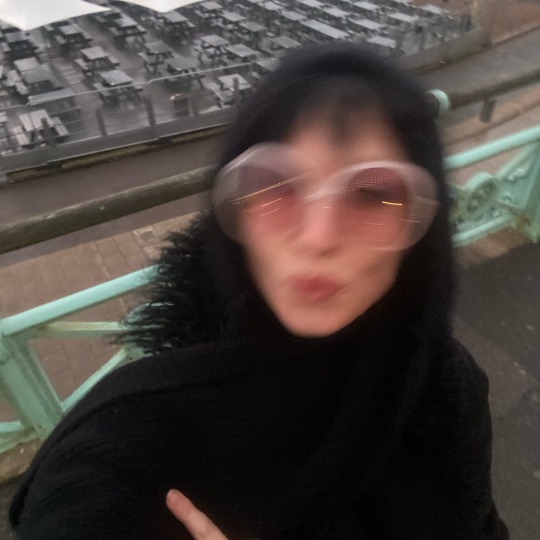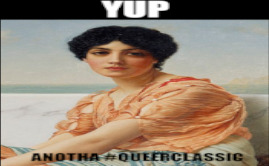#gaytown
Text
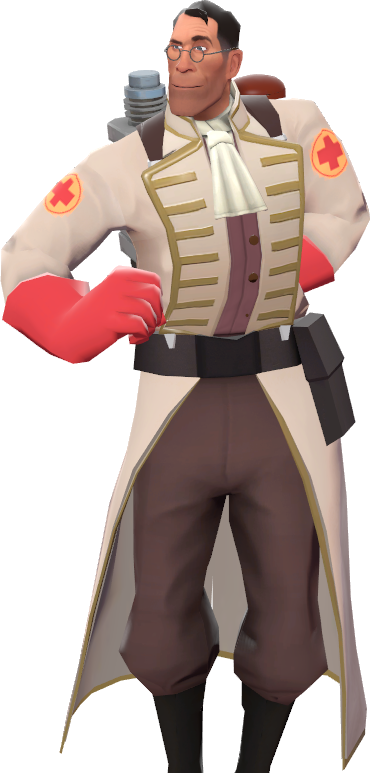
Sparkle on it's Wednesday don't forget to be yourself
[Image ID: The wiki render of Medic tf2 wearing the Foppish Physician, which adds gold-trimmed lapels and a Mandarin collar to Medic's usual labcoat. He is standing with one hand on his hip and the other behind his back like that one image of Jerma. End ID]
#medic gay ass hand on hip wednesday#ariel if you see this. the fruity foppish freak from gaytown#tf2#team fortress 2#medic#medic tf2#tf2 medic#jerma#jerma985
560 notes
·
View notes
Text
what did I just find on pinterest
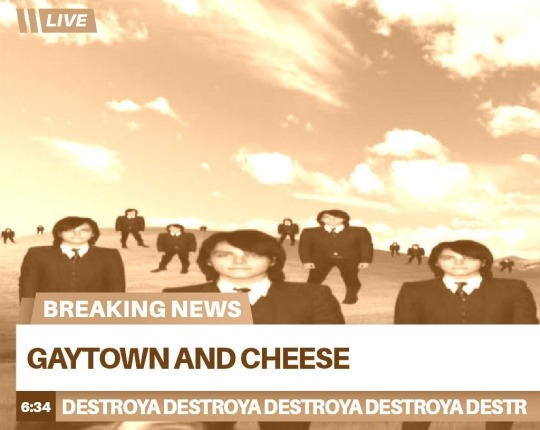
#BREAKING NEWS!!! rare gerard sighting at gaytown and cheese 📍#mcr#my chemical romance#gerard way#my chem#my chem romance
26 notes
·
View notes
Text
hitting up a drag bar tn to celebrate the last night of pride month

7 notes
·
View notes
Text
also tinder sucks ass
#i wanna get involved in irl gay scene so bad bc i hateee texting i hate having to remember to open an app if i want to meet people#anyway. going gaytown properly for the first time ever (!) (i've been at this uni over 2 years!) in a few weeks yayy#i was like damn i want to get involved in the gay scene but i don't want to go by myself at least at first bc it's scaryy#and then i remembered i have free will and a friend who likes clubbing so i messaged her and now we're going out :) yippee#obvs not gonna be on the pull because i will not be ditching my friend but i just wanna observe. see the sights. go to the bars etc.#get a feel for it all#because next year when i graduate i'm gonna be in a new city doing this alone so i want to dip my toe in with a friend by my side <3#also should probably look at other lgbt stuff. idk. daytime activities. but one thing at a time i'm v busy rn#it'll get done....so long as i keep taking steps forward...i'll get somewhere eventually and it'll take as long as it takes#natural progression...can't rush these things#<- applies to like 60% of my life right now#anyways. i love thinking things out in tumblr tags & then discovering my posts years later and remembering old trains of thought.#hi future me
3 notes
·
View notes
Text
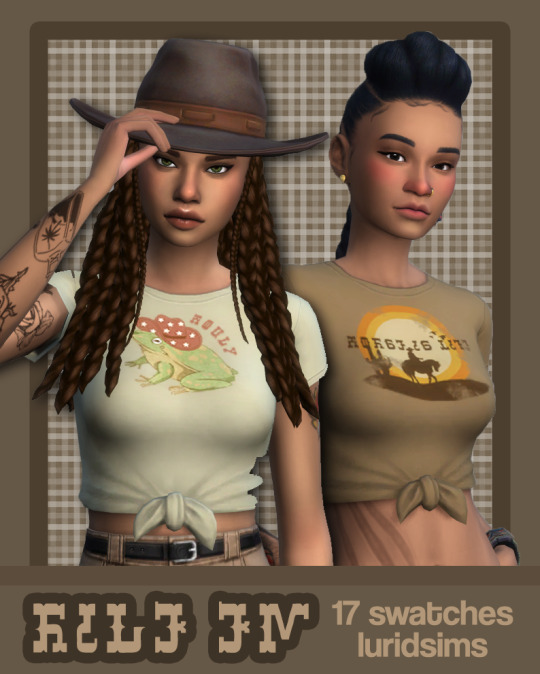
RIDE 'EM! a recolour by luridsims (sailorsenshims)
when i saw plumbella talking about the lack of obnoxious horse girl shirts in the new pack, i knew i had to do something about it. so here's 17 swatches of ranch-themed shirts, with some gay shit thrown in.
featuring simlish slogans such as: y'all means all, just a girl who loves horses, save a horse ride a cow(boy/girl), cowboys for trans rights, this barbie is a cowgirl, sheriff of gaytown, and i put the ride in pride (and more!)
THIS SHIRT REQUIRES THE ORIGINAL MESH! you can download it from @aharris00britney [HERE] - it is the Zoë Top V1 which you can find in the item index listed on the download post.

🐎 DOWNLOAD HERE 🐎
2K notes
·
View notes
Note
How do you think Stella meeting Binta for the first time would go?
(I can't remember if they interact or see each other in the game)
They actually don't interact in game at all 😔 Which is so darn unfortunate.
However ☝️
I like to think the way they meet up is that directly after the events of season 2, Jesse stays in BeaconTown obviously and is simultaneously working on getting the town back in order, providing care and resources to those affected while the Admin brought chaos to his town, and also trying to figure out what to do with the people of the Underneath. For a while, since Jesse and Binta are both leaders, they both work with their people to help liven up town again. Of course some people from the Underneath decide to leave Beacon to find themselves in the new world. Binta stays behind though and at some point in time, out of genuine curiosity, has a talk with Jesse in regards to Champion City, which is still a pile of rubble in BeaconTown's distance. Jesse explains Stella and her situation, and Binta can sympathize with her being a leader herself who too struggled to help her people. So once she's confident that the residents from the Underneath who decided to stay in Beacon are all situated, she decides to go to Champion and offer her help.
This is where she meets Stella and boy, is she something. Binta, unlike Jesse, immediately finds Stella's egotistical personality somewhat charming. It's not something she experienced often with her people who mostly expressed dread and sorrow for their living situation. I can't imagine true happiness was ever found while living in the Underneath. To see someone so into themselves the way Stella is, it compells Binta to put in the extra effort to get to know her. Like really get to know her.
I like to think at first Stella is kind of put off by the idea of needing help from an outsider, but after the Admin's reign of destruction, she's softened up to the idea and keeps a more open mind now rather than just pushing Binta away and boasting about how she doesn't need help.
Binta is like, really great at keeping Stella in line too. Teaching her proper and more respectful ways to talk to people. People have obviously tried before, but Stella would just push them away or act condescending towards them. Binta though has incredible patience. I mean look how she lived for god knows how long? Stella could be snappy at her, and Binta would just stand there, hands on her hips unfazed kind of just waiting for Stella to give her a proper response, and honestly? It works. Stella's attitude changes towards her once she realizes its not working, and it eventually happens towards her own people. Never Jesse though she is still the same towards Jesse forever and always 💀.
It's not exaclty a "first interaction" kind of response, but more how I'd think they'd act around each other in the beginning. For first interaction, I'll have to really think about it. I'd love to write a fic about them some day.
Anyways I like to think Binta falls first and Stella falls harder 🫶 Once they get married it's GayTown vs LesbianCity.
23 notes
·
View notes
Text
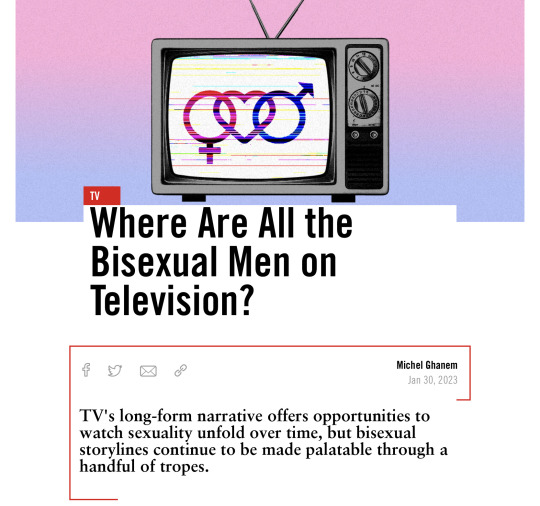
“I’m not even sure bisexuality exists. I think it’s just a layover on the way to Gaytown,” Carrie Bradshaw famously said in the offensive, misinformed 1998 episode of Sex and the City in which she dates a bisexual man. These words are still painfully seared into my brain. How could a sex columnist, a character written predominantly by gay men, have such a limited view of queer identity? Nearly ten years later, a 2016 episode of HBO dramedy Insecure sees Molly (Yvonne Orji) finding out that the man she’s seeing, Jared, nonchalantly had a sexual encounter with another man. After exposing her biphobia to her friends, another character declares Jared to be gay. Ultimately, Molly and Carrie both decide, despite the chemistry and their attraction, that they could not get past their own compulsory monosexuality to continue dating a bisexual man. Why does television, a medium primed for long-form character development and storytelling, continuously fail at representing bisexual men?
Twenty-five years after that infamous Sex and the City scene, bisexuality (for the purposes of this piece, I am using bisexuality as a term that encompasses all people with the capacity to be attracted to more than one gender, including those who identify as bisexual, pansexual, fluid, queer, and more) on television has made significant strides—from young-adult programming like Euphoria, Riverdale, and Gossip Girl, to adult dramas like Game of Thrones, The Magicians, and obviously, The Bisexual. Bisexuality is no longer relegated to a very-special episode, and is slowly leaving the realm of bad, misinformed jokes. According to GLAAD’s 2021-2022 Where We Are on TV report, queer representation on television is at an all-time high. After two consecutive years of decreases, bisexual representation increased by one percent over last year: nine non-binary characters, 124 women, and sadly, only 50 men. Fifty may seem like a solid number at the outset, but consider the quality of these representations. Aside from a few stand-out examples, like Nick Nelson (Kit Connor) on Netflix’s much-loved Heartstopper, many are relegated to supporting and recurring characters, at best, and stuck in tropes, at worst.
Maria San Filippo is an associate professor at Emerson College whose research focuses on screen media’s intersections with gender and sexuality. In 2013, she published The B Word: Bisexuality in Contemporary Film and Television, a pathbreaking monograph on the state of bisexual representation in both mediums. “Bisexuality was only beginning to be central and recurring, rather than peripheral and episodically one-off or short-lived,” she said over email. “Bisexuality’s representational legibility has been expanded; it’s less easily deniable as ‘just a phase’ when bisexuality becomes an ongoing character trait.”
Broadly speaking, on-screen storytelling has struggled to construct bisexuality in ways that reach beyond the word landing at the butt of jokes or framed through the lens of disgust and abjection. Nowhere does it fail bisexuals more than television, a site of endless discursive possibilities. Television’s long-form narrative offers unique opportunities to watch sexuality unfold over time, but rather than exploring and showcasing every permutation of bisexuality, bi men on television are far and few between.
“Bi+ male representation has always been the biggest challenge,” San Filippo said. “Bisexuality threatens heteropatriarchy and phallic authority, and so must be hidden or, if acknowledged, desexualized and disparaged through mockery or else hypersexualized as in porn (and even then bisexuality is rebranded as ‘gay for pay’).” She said it’s not unlike the uncommon sight of male frontal nudity on screen, which she explores in her 2021 book, Provocauteurs and Provocations. “Dan Levy’s character David on Schitt’s Creek is one high-profile example of recurring, more nuanced male bi+ representation,” she said. “We need more.”
The phallic authority, as San Filippo calls it, is not as threatened when it comes to the representation of bisexual women characters, who were more than double as numerous in the 2021-2022 television season. Nate Shu, a bisexual comedian based in Boston who spoke with me over Zoom, suggests that feminist film theorist Laura Mulvey’s work on patriarchal ideologies in film still applies here. Mulvey’s seminal 1975 essay, “Visual Pleasure and Narrative Cinema,” uses a psychoanalytic lens to look at the way women have been depicted in film primarily for the pleasure of the male viewer. She coined this theory the male gaze.
“Lesbian and bisexual characters are more attainable when they’re female because there’s something for male viewers to hold on to,” he said. “A bisexual woman is still an attainable woman to a straight man, whereas a bisexual man is both a threat and an anomaly.”
These conventions are sewn into the fabric of on-screen storytelling, a part of the canon of cinema that queer storytellers are working hard to reform. But despite this hard work, bisexual stories are still too-often made palatable to viewers through a handful of storytelling tropes: the coming out story, reasserting the status quo of a relationship or identity, or hinting at a character’s dishonesty or shiftiness (it pains me to bring it up, but Frank Underwood on House of Cards is a great example here).
The CW’s 2015 musical-dramedy Crazy Ex-Girlfriend showcased one of the more fleshed-out bisexual men on television, Darryl Whitefeather, played by Peter Gardner. His unapologetic musical sequence on how he’s “Gettin’ Bi” was an audacious and refreshing moment for a middle-aged character embracing his sexuality—despite his entire storyline being framed around coming out. We tend to see these coming out narratives again and again, to the point where it begins to feel like viewer manipulation. The coming out scene will only lead to the catharsis of Heartbreaker-level tears if it feels earned through a character’s arc of self-suppression and pain. However, the gay blueprint has already been established, and thus the coming out story is relatable and palatable, rather than depicting a character already living their truth.
Shu, who identifies as bisexual and biracial for the sake of alliteration in his comedy (as opposed to pansexual, a term to which he more closely relates), asked me poignant questions: “What is queer representation? Having a character make an off-hand comment and it’s never acknowledged—that is a queer character, but it’s not a queer story.” His ideal bisexual representation allows characters to be authentic people living outside of constructed narratives that are more viewer-friendly like the coming out story. He could only name one example of an Asian bisexual character on television that he felt somewhat seen through—Magnus Bane, played by Harry Shum Jr. on the Freeform supernatural drama Shadowhunters. “It’s tough to get out of the boxes of what culture, film, and TV have defined for decades,” Shu said.
Marvel has been a site of critique around its inability to flesh out queer characters in an authentic way, awkwardly suggesting that all superheroes are heterosexual. The 2021 Disney+ series Loki made headlines for a 20-second scene where the titular character confirms his bisexuality after admitting he has been with princesses and princes in his past. This kind of casual bisexuality has become more commonplace in the streaming era, to the point of forgettability: Bill Pargrave on Killing Eve, playing Eve’s MI5 boss until he was eventually stabbed by murderess Villanelle, also identified as bisexual in a passing conversation. Other examples include Joe MacMillan (Lee Pace) on Halt and Catch Fire and the titular character (Tom Ellis) on Lucifer. Does the off-hand knowledge of a character’s sexual fluidity, without an in-depth exploration of his sexuality, qualify as queer representation? Perhaps a better question would be, does it make bisexual viewers feel seen and understood, and add to monosexual viewers’ understanding and empathy of bisexuality?
At the end of October 2022, Kit Connor came out as bisexual in a bitter tweet after months of being hounded and online bullied by Netflix Heartstopper fans, some of whom accused Connor of queerbaiting for playing a bisexual character. The fall-out made me wonder why any actor, let alone a bisexual actor who may still be processing or figuring out his sexuality, would want to play a bisexual character in the social media age. “I think some of you missed the point of the show. Bye,” his tweet read.
Not to center myself in the discourse, but I can’t help but wonder how a more thorough cultural understanding of bisexuality would impact my own dating life as a gay man, what the dating pool might look like if there was a more rigorous acceptance and visibility of bisexuality and fewer “discreet” men refusing to send you photos of their faces on dating apps with fear of being outed in their real life. The latest 2021 Census data coming out of the United Kingdom suggests there are currently nearly as many bisexual-identifying individuals as gay and lesbian survey respondents combined. These numbers feel hopeful, to me. Previous generations grew up dissatisfied by the range of representation on television, leading to iconic shows like Pose that shifted the course of television at the intersections of queerness and race. I can only imagine what the landscape will look like in 10, 20 years as the bisexual-identifying Gen Zs—the queerest generation yet—make their way into creative fields. We’ll have to watch and find out.
#bisexuality#bisexual community#lgbtq community#lgbtq#bi#support bisexuality#pride#bi tumblr#bisexuality is valid#lgbtq pride#bisexual#bi pride#bisexual nation#bisexual pride#bisexual education#bisexual youth#support bisexual people#bisexual men#respect bisexual people#bisexual rights#tv#bisexual representation#bisexual men exist#television#bisexual heart#heartstopper#nick nelson#Loki
81 notes
·
View notes
Text
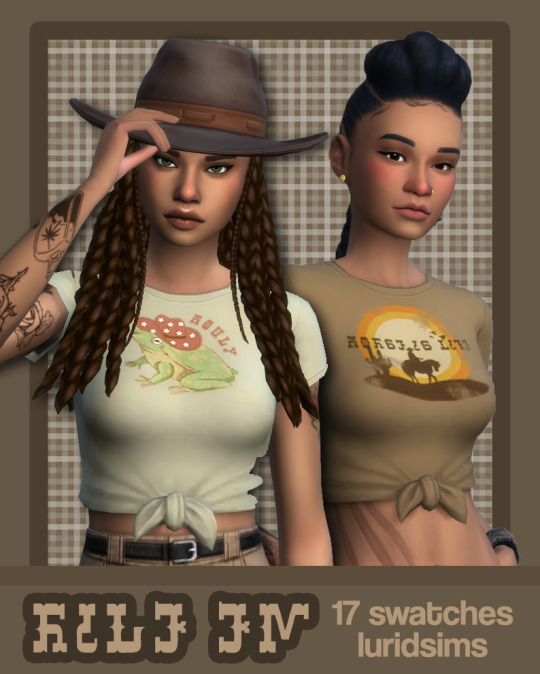
RIDE ‘EM! a recolour by luridsims (sailorsenshims) by maxismatchccworld
when i saw plumbella talking about the lack of obnoxious horse girl shirts in the new pack, i knew i had to do something about it. so here’s 17 swatches of ranch-themed shirts, with some gay shit thrown in.
featuring simlish slogans such as: y’all means all, just a girl who loves horses, save a horse ride a cow(boy/girl), cowboys for trans rights, this barbie is a cowgirl, sheriff of gaytown, and i put the ride in pride (and more!)
DOWNLOAD NOW[FREE]
#sims4#ts4mm#s4mm#s4cc#lana cc finds#sims 4 cc#ts4 cc#s4 cc#ts4cc#sims 4#sims 4 build#sims 4 custom content#sims 4 maxis match#ts4 simblr#ts4 screenshots#sims female#sims clothes#maxismatchccworld
24 notes
·
View notes
Text
going out to gaytown by myself i'm so brave
5 notes
·
View notes
Text
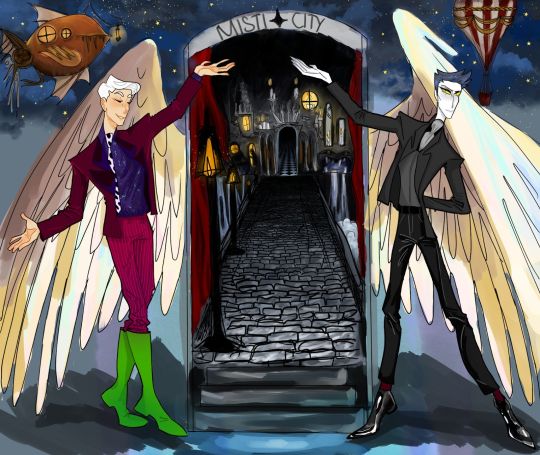
Hey kid welcome to Gaytown
(it looks terrible raw so perhaps click on it for better quality. If you're into that sort of thing)
#digital art#oc art#digital drawing#oc#art#digital painting#character art#character design#dreamcore#original character art#original character#misticity
10 notes
·
View notes
Text
Hey yeah Im in gaytown and no one here knows you
3 notes
·
View notes
Text
MAGAs being forced to root for the team from the communist gaytown they loathe because of their bizarre obsession turning taylor swift into the culture war nexus amuses me
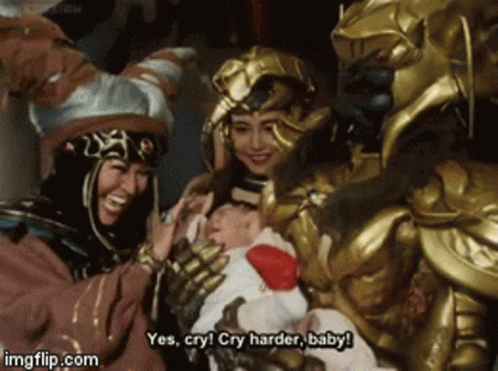
5 notes
·
View notes
Text
This latest ep of "Hailey's On It" really gave us the gayest gay couple this side of Gaytown, complete with furbaby, and I was so here for it.
5 notes
·
View notes
Text
igual aca el evangelismo no gana todavia xq somos medio gaytown en buenos aires y tipo la iglesia catolica tiro raices bien en el fondo encima el papa es argentino asi ue muchas señoras siguen en esa con eso dicho si algun dia sale posta lo de la ley anti cultos no queda uno solo vivo
8 notes
·
View notes
